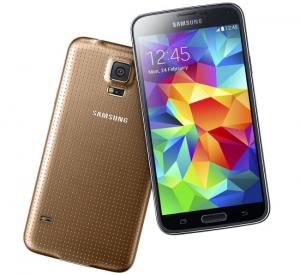A couple of days ago we reported that according to tests by DisplayMate, SDC's new 5.1" FHD Super AMOLED panel (used in the GS5) is a lot more efficient than Samsung's previous generation panels (a 27% compared to the GS4 which is actually a little smaller). DisplayMate's Raymond Soneira told us that Samsung said that the improvement mostly came from more efficient OLED materials.
This is quite interesting, and according to my own checks, it seems that indeed Samsung is using new materials. In fact, my sources say that Samsung adoped new and improved phosphorescent materials.
It may be the UDC is supplying Samsung with a new red emitter, green host or green emitter. Although I would have assumed we'd know if UDC had a new, more efficient commercial. The only new public commercial material from UDC lately was a new red material that achieved commercial status a few months ago (this was reported by UDC in May 2013). But UDC said that this specific red PHOLED only improves the lifetime and not the efficiency of the previous red (it was also reported that this specific red emitter is aimed towards OLED TV applications).

This may be a nice surprise for UDC investors. A new red (or green) material may mean that the volume discounts Samsung enjoyed will be defaulted and so UDC may see a jump in near term revenue. We'll probably know more when we see UDC's next quarterly report. Another possible scenario is that Samsung switched to a different red host (not currently supplied by UDC).
Disclosure: the author of this post holds some shares in Universal Display
Comments
I find this article very speculative, and rather like what might be found on a UDC invertsment forum.
The panel may be more efficient because of improved PHOLED (note, UDC trademark) materials, or it could be because of improved efficiency in fluorescent blue materials (a rapidly developing area), or improved transport layers and device stacks that give better charge balance... or perhaps Samsung are now using improved phosphorescent materials from a 3rd party, provided under license from UDC.
As I said in the article, my source told me that there are in fact new phosphorescent materials in the GS5's display.
Who if not UDC would make another material for Samsung?
The agreement above states Samsung cannot manufacture, or have manufactured, materials covered by UDC IP without written consent. The majority of phosphorescent host materials are not covered by UDC IP, and Samsung could buy these from whoever they want. Perhaps a new host material improved efficiency.
No one would.
As per amened No. 1 of SEC 8k August 22,2011
2.3 No Right to Make OLED Materials . Except as may otherwise be expressly agreed to by the parties in writing, nothing in this Agreement shall be construed as authorizing or otherwise permitting SMD or its Permitted Sublicensees, or any third parties claiming through them, to practice under any Universal Display Patents for purposes of manufacturing Phosphorescent Materials or other OLED materials, or having Phosphorescent Materials or other OLED materials manufactured for them or on their behalf.



The following is from my notes on UDC's presentation at Goldman in February.
- Expects to see some of their NEW materials in the commercial market in 2014, highlighted this twice and used materials(plural) both times.